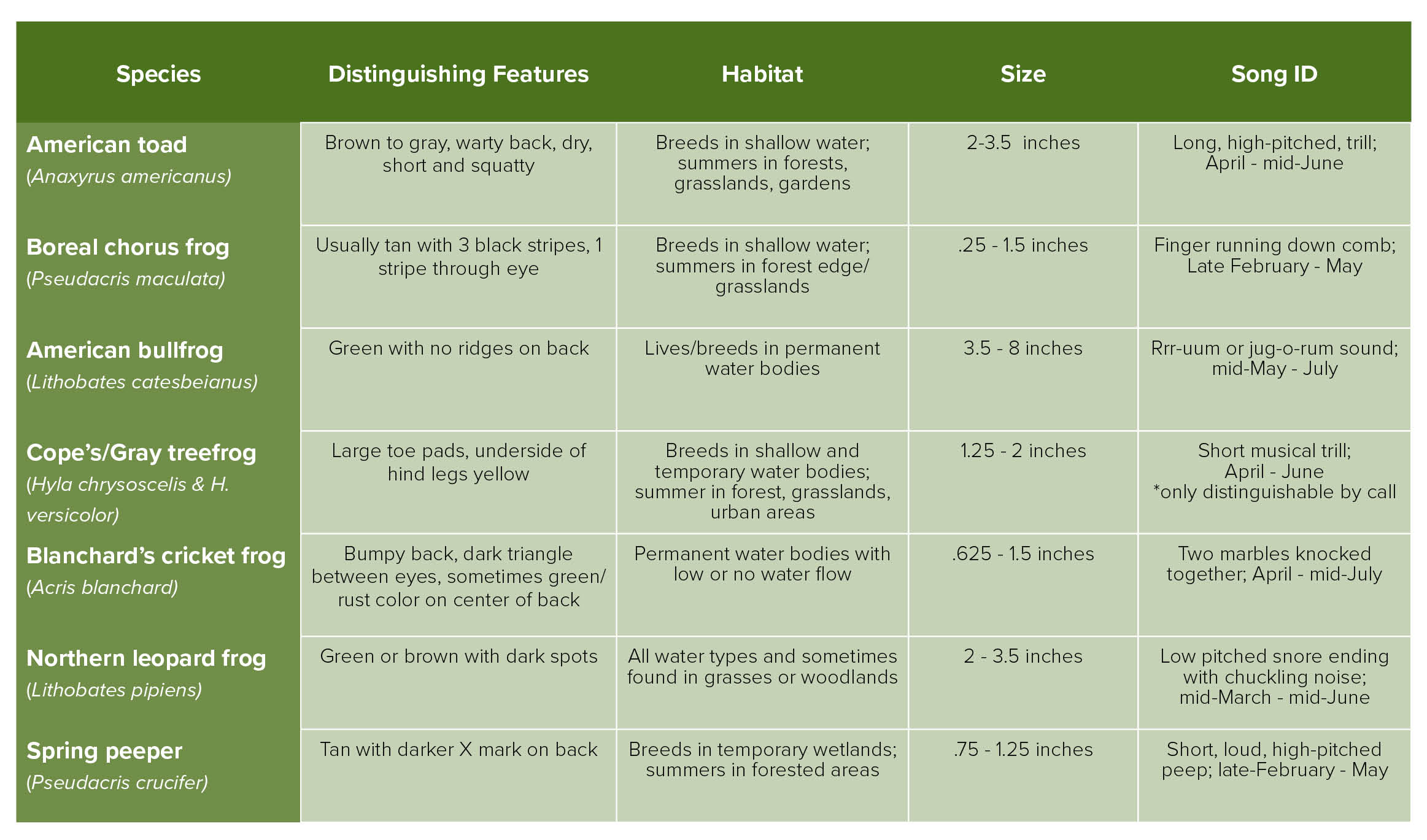Spring Peeping
By Sydney Algreen-Hunter on April 20, 2023 in Blog
Each spring, amphibians head to shallow water bodies to mate. Some years when conditions are just right, American toads will descend in mass quantities to nearby wetlands and ponds all at the same time. Before you see the water, your ears are filled with their constant trill — a drumroll welcoming the warmer weather, longer days and the toadlets to come.
From the golden eyes of toads to the tropical-looking tadpoles of tree frogs, there is so much to discover when it comes to Iowa’s amphibians and spring is the best time to do it! You need few supplies or preparation and are highly likely to find several species at the same time.
Amphibians are often the canary in the coal mine for the health of our ecosystems. They have moist, permeable skin through which they can breathe and drink. This permeability also makes them highly sensitive to chemicals and other environmental factors, and in part explains amphibians’ worldwide decline.
The Iowa DNR has been collecting data on toads and frogs for over 30 years, enlisting volunteers to survey the number and species of frogs and toads they encounter at specified locations. This community science is a significant tool in assessing the health of amphibians and their environments. Visit the DNR’s website or contact vwmp@dnr.gov to learn more.
Here are a few tips to help as you search for amphibians this spring and summer:
- Most amphibians are nocturnal or crepuscular so evenings are often the best time to search.
- An aquatic net and flashlight can be helpful in catching them.
- Most Iowa species prefer a semi-permanent but shallow body of water for reproduction.
- Many county conservation departments offer public events focused on frogs and toads. Visit mycountyparks.com to find an event near you.
